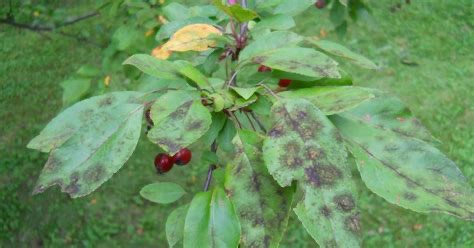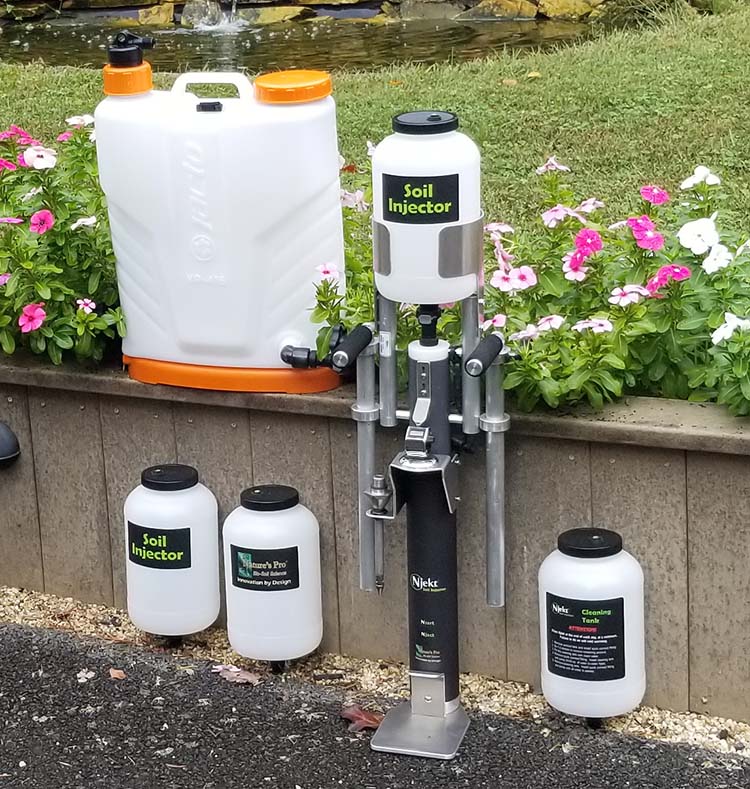Everyone knows that doing what you’re doing will get you what you’ve previously gotten. The only way to change the outcome is to change the inputs. There are four fundamental things that can be changed.
- People
- Process
- Products
- Equipment (Sorry, I couldn’t find a “P” word!)
And often times it is a combination of these things.
Gary here . . .
To optimize plant health, everyone should know that the key is not disease management, but health management. Personally, we know that if we are always treating ourselves for disease, we cannot be truly healthy. So it is with the plant kingdom.
Last week our business building tip was how a true IPM program (which most companies even today do not practice) leads to healthier plants and significantly greater profitability. And you need the right equipment to do that profitably. Optimizing soil health is the first step to plant health. A tree or shrub cannot be any healthier than the soil in which it is growing.
Junk Soil = Poor Plant Performance
At Nature’s Pro, we specialize in fixing broken soil. When poor soil conditions are corrected, trees & shrubs naturally perform better. Healthier plants have less disease and require fewer disease treatments, 50% or more fewer treatments. It only makes sense. By the way, the program to do this is not complicated and is another source of income. Remember, profit is increased incrementally from multiple activities.
But sometimes trees and shrubs do get sick and must be treated. Then the question becomes, are we treating the disease the most effective, efficient and profitable way.
There are three basic types of PHC application methods that do not penetrate the bark, foliar sprays, trunk sprays, and soil injections. A clear understanding of the Plant Health Care Industry would cause one to realize that the foliar method by far is the least efficient and profitable. And, up until a decade ago, trunk sprays were not even possible.
But that changed with a brilliant scientist named Bill Stringfellow.
This is the third segment of our 3-part series on redesigning your business to provide excellent service while making more money.
I’ll let Jim Dunkerley pick up the story from here.
“During my years with Heartland Horticulture, where I had also implemented all of the IPM quality, efficiency and money generating strategies, one of our biggest issues was apple scab. I met Bill Stringfellow with Quest products, and he told me about Reliant fungicide. It had a great mode of action, but was not labelled for scab at the time. However, I felt that it should work since it controlled a couple of related fungi very well. Bill agreed and had already started testing this hypothesis with an experimental label.

I volunteered to be one of his field testers for one season. His process involved using Pentra-bark with the Reliant fungicide as a trunk spray to push the Reliant into the xylem so it could be carried up to the canopy and into the leaves. Theoretically, since Reliant is slow to break down when in the plant, it should provide very long-term control of scab. Our plan was to trunk spray our crabapples twice a season, March and April, about 6-8 weeks apart.
The Difference – Foliar Spraying vs. Trunk Sprays
Foliar Spray
Example Crabapple: 15” high, 10” DBH, 200sf canopy
Product: Reliant @ 2Q (64oz) / 100G
Application: 5G of dilute material, 10 minutes
Foliar Spray Disadvantages
Efficacy: 2-4 weeks.
Missed target and drip-off: 50% +
Number of stops: 10 – 12
Sprayer: Much larger truck to carry more liquid, 400-500G
Significant additional time to unwind and rewind the spray hose.
Bark Spray
Example Crabapple: 15” high, 10” DBH, 200sf canopy
Product: Reliant @ 1:1 mix of product with water
Application: 6oz of dilute material, 5 min.

Bark Spray Advantages
Efficacy: 6-8 weeks.
Missed target and drip-off: 90% absorption. Only 10% lost.
Number of stops: 20+
Sprayer: Can use a smaller spray truck, even a pickup truck. 150G water.
Can do when windy, warmer, or misty, unlike foliar sprays.
Then we made a third application. A canopy spray in late May. Results were great! We got control all the way through July. We were able to save about 50% in labor expense because it took only a couple minutes to spray a crabapple trunk and we could do it in windy conditions. Our product cost was reduced by up to 30%.
This efficiency also opened up our schedules so we could address other pest issues in a timelier manner and take care of more customers. The result was happier customers and additional income from the additional work we had time to do.
Researchers from Ohio State and others then adopted our process to design multiple experiments for apple trees to control the same issue. As a result of all this data, Bill was able to get apple scab added to the Reliant label so others could get great disease control.”
Bottom Line with Trunk Spray:
- Much better control
- Half the labor cost using the Njekt System
- 30% less chemical cost
- More time to make money doing other services
- The Sprinter is the perfect size to carry all of the equipment and carrying less liquid
- PROFIT DOUBLED ! ! !
Thanks to Bill Stringfellow and a team or researchers, a new method was found to treat a common disease that is better for the tree, better for the environment, and better for your bank account. For more information about strategies to grow your business, you can contact Jim Dunkerley at (614) 496-8746.
But none of this happens without the right equipment.
The Njekt System with its most advanced soil injection technology, along with the accompanying backpack sprayer, gives you the tools to Double Your Income for these types of applications. Coupled with the 21st Century Sprinter PHC Delivery System, you have the equipment you need to deliver services to your customers more efficiently, more effectively, and more profitably.

This also does not happen by accident. It must be intentional, exploring what is available to make a difference for your company. And you must search in all three areas: equipment, products and methods looking for efficiency, efficacy and profitability.
This is the time of year to do your research. There are many trade shows available to attend, although the larger shows tend to have more options for you to examine. Don’t miss out on this opportunity!


